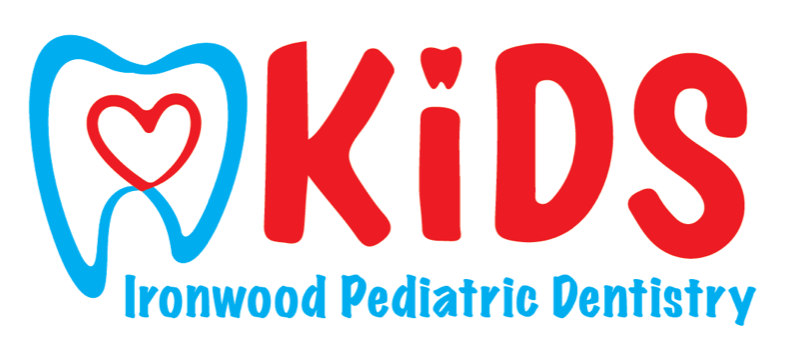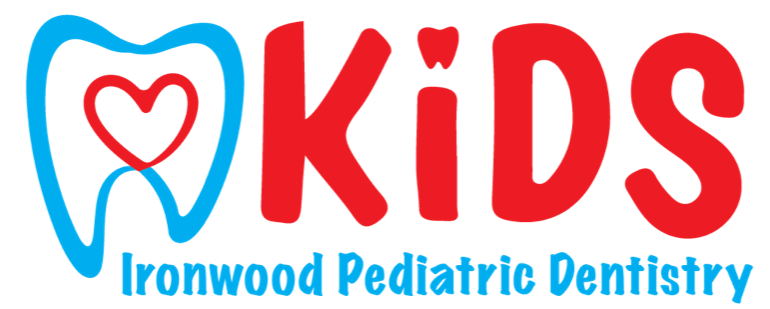Kids Orthodontist in Scottsdale, AZ
Home Pediatric Dentistry Orthodontics
Best Orthodontist in Scottsdale, AZ
Chances are that if you are reading this then you have been told or you suspect that there is something about your child’s teeth or jaws that needs special attention—more than what your dentist can offer.
The last time you visited one of their offices, your child’s dentist or doctor may have been the person who pointed out this need to you; that is how many parents first hear the word, “orthodontics.”
If you are unfamiliar with orthodontic dentists and what they do, or if you have questions about dentistry generally or orthodontics in particular, including where to find the best children’s orthodontist in Scottsdale, Phoenix, or in other Maricopa County office locations, then you have come to the right place.
Here are the basics of what you need to know to see if you need to act further and talk to your dentist about orthodontic options for your child.
What are Orthodontics?
The word “orthodontics” has its roots in the Latin language: “ortho” refers to something that is straight, true, or proper, and “dontics” is related to teeth. Put them together and you can say that orthodontics means, “straight teeth.”
Simply put, an orthodontist is a dentist who has specialized education, training, and experience in straightening misaligned teeth by using orthodontic devices like braces, aligners, and retainers.
But there is more to orthodontics than straightening crooked teeth.
We work with your child’s teeth and jaws together in what is known as “dentofacial orthodontics”—taking into account that sometimes the upper and lower jaws do not grow at the same speed.
Sometimes this means that we must also align your child’s jaws as well as teeth, and this can require the use of additional orthodontic devices like palate expanders, bionators, twin blocks, Herbst and Forsus appliances, and headgear.
How Can I Tell if My Child Needs Orthodontics?
Orthodontic problems can happen in several ways.
Some of them may be obvious to you. Others require a trained eye to see.
Here are some of the most common orthodontic issues that your child might experience:
- Overbite: This is what happens when your child’s upper front teeth are sticking out over the lower front teeth. Also known as “overjet” or “buck teeth.”
- Underbite: This is the opposite of overbite when the lower front teeth stick out in front of the upper front teeth.
- Open bite: This condition is when, even when your child’s mouth is fully closed, a gap exists between the upper and lower front teeth. Also known as “bad bite.”
- Crossbite: This is a variation of underbite when the upper front teeth are behind the lower front teeth.
- Overlapping teeth: This happens when instead of aligning normally the upper teeth and lower teeth are “mismatched” with one another. This can be caused in several ways, some genetic and some behavioral.
- Crowded teeth: As the name suggests, this happens when your child has too many teeth for the size of the mouth. The cause can be hereditary, but can also come from having used a bottle or pacifier for too long or from sucking on thumbs or other fingers.
- Crooked teeth: Crooked teeth are misaligned teeth, and are common in both children and adults; about half of all people have at least one crooked tooth. Most of the time a minor crooked tooth issue does not need orthodontic treatment, but when there are many it can become a problem that needs fixing.
- Rotated teeth: Like with crowded teeth the name here largely describes what has happened – one or more teeth are turned in unnatural positions. This can be caused by a crowded tooth condition, or by injury to the mouth during childhood, or by other medical conditions like a mouth tumor or a cyst.
- Impacted teeth: Another crowded tooth condition can happen when your child’s wisdom teeth do not have enough room to emerge or to fully develop.
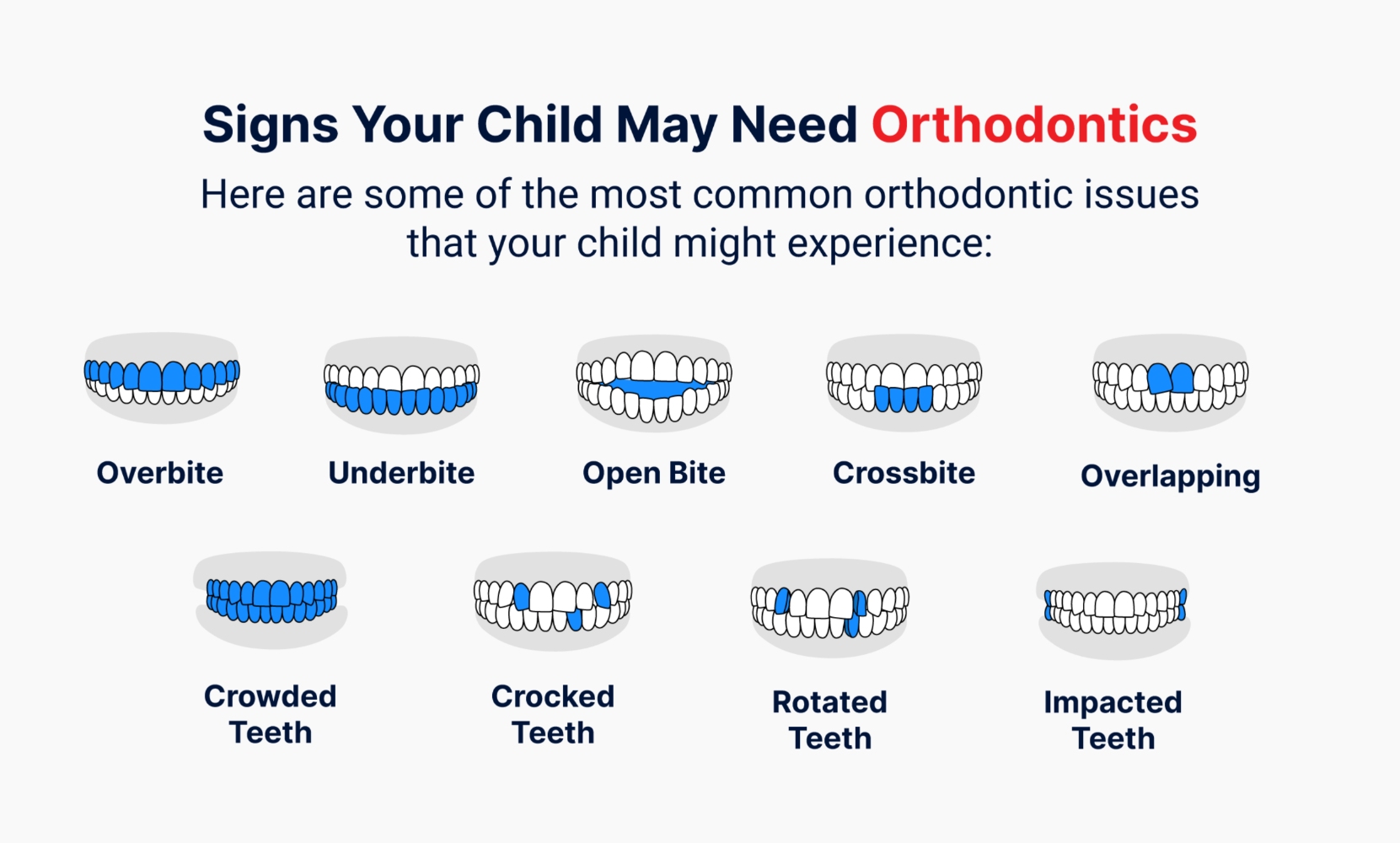
You do not need to know all these conditions unless you want to be a dentist or an orthodontist.
It can be helpful, though, to be able to recognize some of the signs of a budding orthodontics problem—like your child smiling with a gap between the front teeth, or watching as he or she experiences pain in chewing food, or listening while he or she speaks with an obvious lisp.
For the signs you can’t see, you have a powerful ally who can: your pediatric dentist.
Your dentist is an excellent person to ask if your child needs braces or other orthodontic services. Your family doctor may also be able to spot dental problems as well, especially if they are affecting other areas of your child’s health.
Your dentist in particular has the training and experience to spot early signs of misalignment in your child’s jaw growth and emerging teeth, and will know when it is time for you to talk with us about a free consultation in our Scottsdale offices.
What are the Dangers of Tooth or Jaw Misalignment?
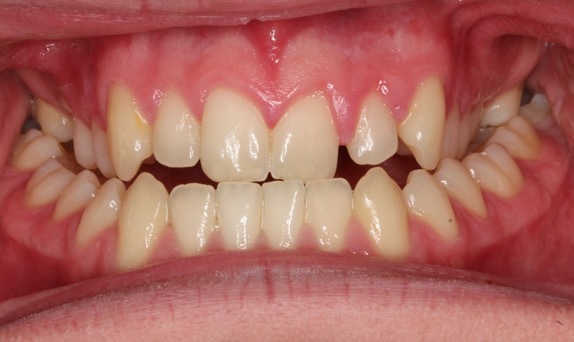
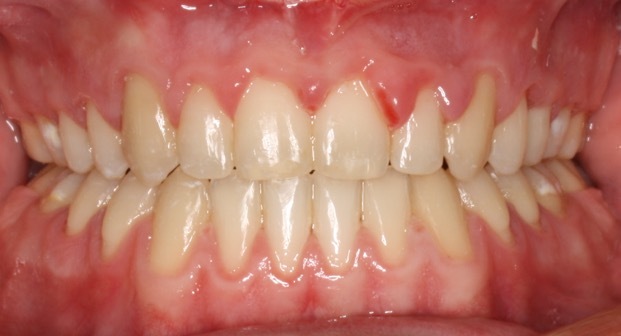
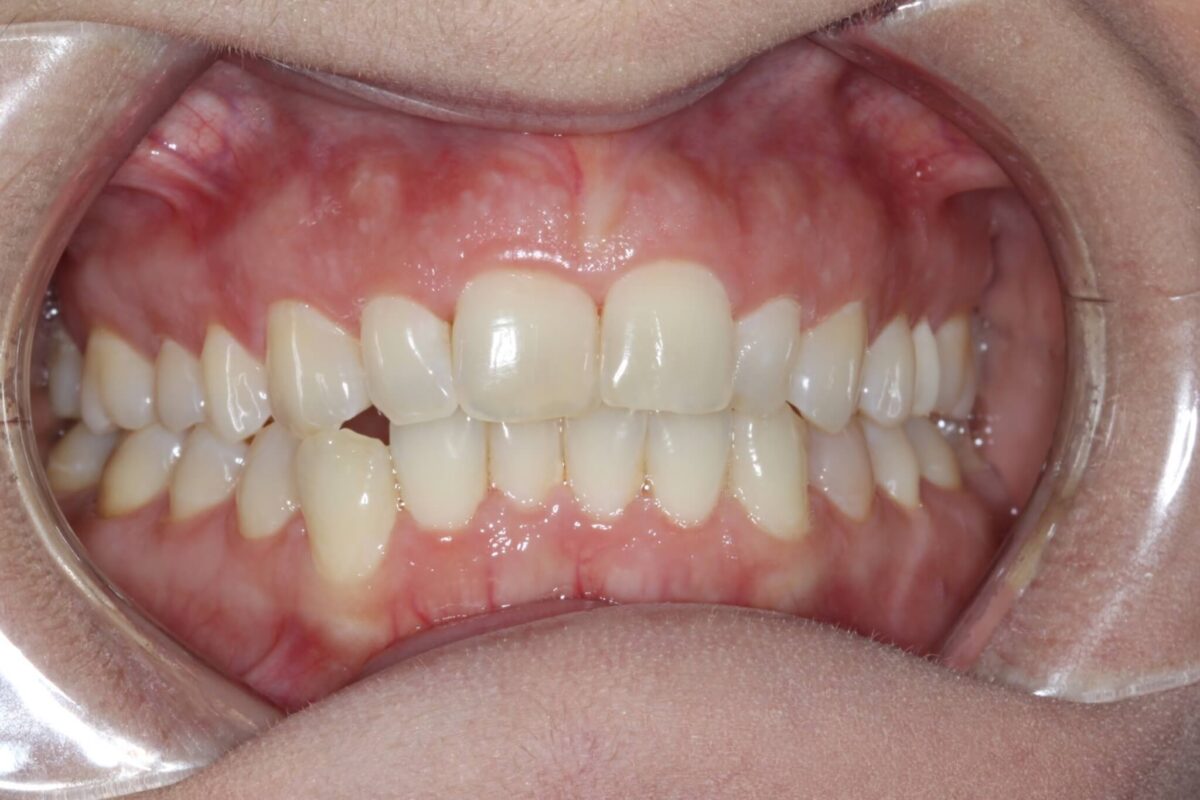

Parents usually associate dentistry and orthodontics with having a healthy and attractive smile.
This is no small consideration: children who are self-conscious about having crooked and crowded teeth can develop self-image troubles that if not addressed can follow them into adulthood, worsening into social inhibitions and negative self-esteem that can affect many aspects of their whole lives.
In addition to the importance of having a pleasing smile in childhood and adulthood, another reason why orthodontics can make a difference in your child’s life is because—if left untreated—tooth misalignment problems can worsen into other physical conditions, some of which are potentially serious:
- Headaches: Your child’s jaw connects to the rest of the skull through two joints and the muscles that control their movements. Misaligned teeth can cause subconscious, subtle changes in the way your child aligns his or her jaw, while chewing or even when at rest. Over time, this constant corrective jaw alignment can lead to joint and muscle stress and tension that can lead to headaches, including migraines.
- Lockjaw: The same joint muscles that can lead to headaches if they are overworked compensating for teeth alignment issues can eventually reach a point where they begin to involuntarily contract, painfully limiting the range of jaw motion into a medical condition. If it lasts for more than a few days, lockjaw can lead to further complications including dry mouth, teeth grinding, tooth decay, mouth ulcers, and even malnutrition.
- Excessive tooth wear: Jaw and tooth misalignment can cause your child to grind the teeth when eating or even while sleeping. This can wear down tooth enamel over time and potentially lead to more serious problems like cracked teeth.
- Speech impediments: Some speech problems, like a lisp or involuntarily “whistling” while talking, can be related to jaw and tooth misalignment. In particular, orthodontics helps to correct issues like gaps between teeth, open bite spacing between the upper and lower front teeth, and the way that your child’s tongue connects with the roof of the mouth while talking.
- Gum recession: Tooth misalignment can lead to a condition where the gums begin to pull away from the teeth. This can eventually expose the roots of teeth and lead to tooth decay and bone loss in the jaws. That, in turn, can lead to loose teeth or even to tooth loss.
- Oral posture problems: Orthodontics is about more than teeth. It involves the whole mouth. Sometimes children can do things like thumb sucking or swallowing by pushing their tongues against their front teeth instead of up and against the roof of the mouth that lead to the front teeth being pushed forward, creating open bite problems. If not corrected as part of overall orthodontic treatment, a childhood habit of pressing the tongue against the front teeth can even undo later in life some of the benefits of wearing braces.
- Stomach problems: Properly aligned jaws and teeth are essential to properly chewing food, which is the first part of healthy digestion. A child with misalignment problems may not chew food thoroughly enough, which can lead to chronic stomach discomfort after eating. Similarly, a child who has poor oral posture can swallow excessive amounts of air, leading to stomach discomfort, bloating, and excessive belching.
Benefits of Childhood Orthodontics
“You can pay me now, or you can pay me more later.”
That may be a blunt way to put it, but one consideration in meeting problems with your child’s dental development is the same for any challenge he or she will face: it is much easier, and usually less expensive, to correct a problem in childhood than to wait until adulthood.
Orthodontics is something that people can benefit from at any age, but the best and most long-lasting benefits come from early intervention.
The reason for this is simple: Your child’s bones and teeth are not done growing and developing, and this pliability makes teeth and jaw positioning relatively simple compared to adult orthodontics.
Another benefit of early orthodontic care is that it can prevent more serious and long-lasting problems from starting in the first place, like accelerated tooth decay, losing teeth, problems with eating and speaking, serious future dental problems requiring expensive treatments like root canals or other dental surgery, and the feeling of social awkwardness that comes from growing into one’s teenage years with crooked teeth and a bad smile.
The American Association of Orthodontics suggests that children as young as seven see an orthodontist for preliminary evaluation.
At this point, although not all of your child’s permanent teeth will have developed yet, enough of them will have for the trained eye of an orthodontist to spot any trouble coming.
Sometimes this might mean early orthodontics intervention, but often it results in what you might call “watchful waiting” for a problem that will arise later on and which can be treated at the earliest practical time.
To sum up, you want to do the best for your child—now and always. 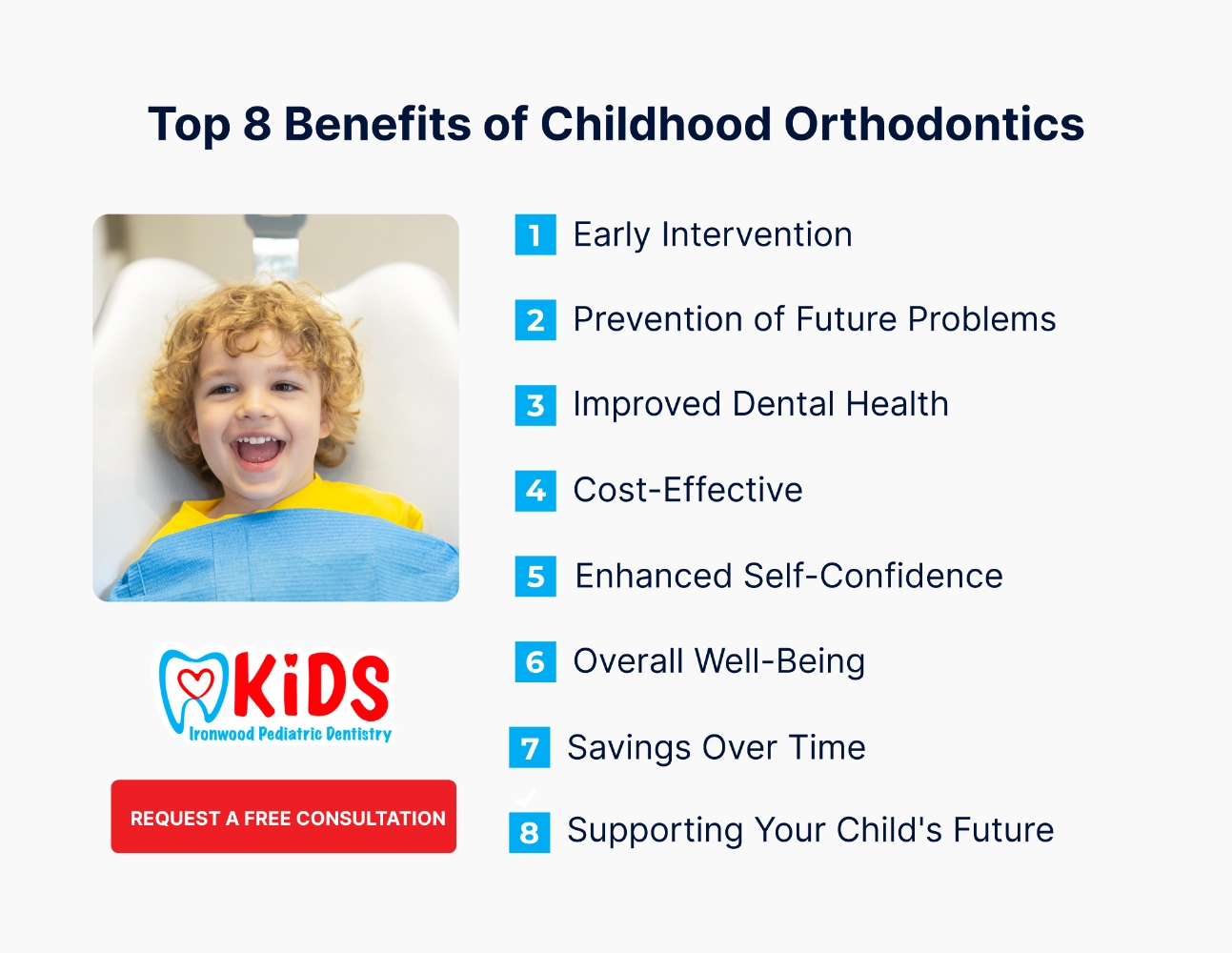
If your child needs orthodontics, then taking care of that need early will improve his or her dental and quite possibly overall health, and support the self-confidence that comes from being able to flash a beautiful smile in social situations—something that will continue to pay social dividends into adulthood.
It will also likely save you money over the “pay me more later” option that could happen if you delay orthodontics until serious trouble begins to emerge.
Frequently Asked Questions about Orthodontics
We hope that we have answered many of the questions you may have about orthodontic problems, how they relate to the practice of dentistry, and how we correct them.
What follows are some of the questions we often receive from parents of our patients.
How often do children need orthodontics?
Firm statistics can be hard to come by, but we estimate that up to half of American children will at least visit an orthodontist, and at least 15 percent of children will require orthodontics. Arizona and Maricopa County are no exceptions to this general, national rule.
Evidence suggests that the use of orthodontics in childhood has been increasing since the mid 20th Century, at least in part because of increased awareness in the dental profession of the advisability to have children as young as seven years old evaluated for orthodontics.
What are your qualifications as orthodontists?
Orthodontics is a highly competitive branch of dentistry.
Most orthodontic residency programs in Arizona and other states only accept a handful of applicants in any given year.
This means that generally, only the most qualified dentists are accepted for further training to become orthodontists.
As orthodontists licensed in the state of Arizona, we are subject to the strict requirements for orthodontists established by the Arizona Board of Dental Examiners (we will call it “the Board” for simplicity’s sake).
These include completing at least four years of orthodontic training after graduating from dental school, passing written and clinical examinations, and maintaining their professional qualifications in the state of Arizona through mandatory continuing education courses.
Our orthodontists are also certified through the American Board of Orthodontics.
In addition, the Board requires us as orthodontists to provide you with a written treatment plan (including the cost of treatment), to obtain your written consent before beginning your child’s treatment, and to have a complaint process in place for you if you need it.
What is the difference between an orthodontist and a dentist?
Dentists are doctors by education and training who specialize in oral health. All orthodontists begin as dentists, because orthodontics is an advanced specialty on top of basic dentistry.
What this means is that in addition to the eight years of higher education required to become a dentist including four years of post-graduate dental school, an orthodontist must then receive an additional three years of formal education and practical training specific to orthodontics, then pass additional examinations needed to become a licensed orthodontist.
Dentists are trained to recognize the early signs of tooth and jaw misalignment and malocclusion.
That is why we recommend seeing a dentist if you believe that your child may be developing these problems.
Your family dentist is not, however, an orthodontist.
Similarly, although orthodontists are qualified dentists, they generally do not practice dentistry but confine their work to orthodontics.
Do you replace my family dentist?
No. Your family dentist is still your primary source of regular dental services like check-ups, cleanings, and cavity fillings.
Our focus as orthodontists is on tooth alignment and bite issues that go beyond basic dentistry.
We complement your family dentist, we do not replace that person.
What are the different kinds of orthodontic devices you use?
Depending on your child’s unique needs, we provide a range of conventional braces and aligners.
Conventional braces include fixed braces, functional braces, braces in combination with elastics, and headgear.
Aligners, also known as “invisible braces,” are a modern alternative to conventional braces. Invisalign® clear plastic aligners are a well-known and effective brand of aligner that we use in our Arizona dental and orthodontics offices.
Invisalign aligners are made of a patented clear plastic and are removable, making it easier for your child to eat, practice good hygiene habits like tooth brushing, and participate in some activities, such as school athletic events, in which wearing traditional orthodontics might be impractical.
In addition to Invisalign aligners, we also offer a full range of Invisalign accessories.
How much will it cost to put braces or aligners on my child?
The need for childhood orthodontics can vary greatly.
What kind of orthodontic services your child may need is a question we need to answer on a case-by-case basis.
Therefore, as a rule in the first consultation we examine your child’s specific issues before making a cost estimate.
Other factors that can affect the cost are how long orthodontics will be needed and whether any other dental problems must also be addressed in addition to orthodontics, such as having some teeth extracted beforehand.
Generally speaking, though, orthodontics can cost anywhere from several hundred dollars to a few thousand dollars.
Do you offer any free consultations?
Yes. Your initial, evaluative consultation with one of our Scottsdale orthodontists is free. At the end of it, we can tell you whether and how we can help your child to have a better, and healthier smile, answer some of your questions, and discuss payment options if orthodontics are needed.
What happens if I delay my child’s orthodontic treatment?
As a rule, dental problems do not correct themselves nor do they lend themselves to home-based, self-help remedies.
Left unattended, misalignment and malocclusion problems only get worse over time.
If the delay is prolonged, the financial effect on you can be to make fixing your child’s problems more costly and time-consuming once you finally commit to orthodontics.
The effect on your child’s sense of self-esteem, his or her physical comfort, and even the ability to properly chew and digest food are other factors to consider if you decide to wait.
There is no need to wait while matters steadily grow worse over time.
Early orthodontic attention is almost always less expensive than waiting until more significant treatments become necessary.
If you believe your insurance will not cover enough of the costs of orthodontic consultations, or if you have no health or dental insurance, we can help you to affordably spread out the cost of treatment through financing.
Will my health or dental insurance cover orthodontics?
Many kinds of health insurance and dental insurance available in Arizona cover orthodontics.
If you have such insurance, you will need to check with your policy provider to see what its qualifications, restrictions, and maximum coverage amounts are.
How long are braces or aligners required?
As with the question of how much orthodontics might cost, the answer to this question depends on the unique dental circumstances your child is experiencing. Your initial consultation with us will help us to know specifically the kinds of problems that exist, their treatment, and how long that treatment will take.
Simple problems, like tooth straightening, may take only a few months. More intricate problems, like closing an open bite, jaw realignment, or correcting overbites or underbites, can take longer, even a few years, and can include using a retainer after the orthodontic devices are removed.
Are there any risks to orthodontics?
We say with confidence that orthodontics are safe as a general rule.
Still, as with many oral health procedures, in some circumstances problems can happen.
Sometimes these problems are caused by a child who does not practice good oral hygiene, like brushing regularly: although braces or aligners will not by themselves cause damage to teeth, poor cleaning and a diet rich in sugar can lead to food being trapped in the orthodontics, decalcification of the teeth, and to tooth decay.
Other possible problems that can occur include mouth pain, pulpal changes, root resorption (a situation in which the body breaks down and absorbs the root of a tooth), and a condition known as temporomandibular dysfunction or TMD. This is a condition affecting the jaw muscles and nerves that can lead to facial pain.
Good oral hygiene practices, maintaining regular dental check-ups, carefully following your child’s orthodontic treatment plan, and letting your orthodontist know during consultations if your child is experiencing mouth, facial, or jaw pain are all ways to minimize the risk of any serious problem developing during treatment.
How long will the results of orthodontic treatment last?
Your child’s mouth is a dynamic place and will continue to be so even when braces or aligners, or other orthodontic devices are removed.
Often a retainer is needed for a few months to a year after completion of orthodontic treatment to promote the teeth staying in their new places.
Still, some shifting of the teeth can happen over the years even after orthodontic treatment, but usually this will not make another round of orthodontics necessary during your child’s lifetime.
Do you guarantee your work?
We are the best orthodontists you can take your child to in Scottsdale, Phoenix, and in Maricopa County, Arizona. Our patient testimonials speak for the care of our people when it comes to our child patients, the quality of our work, and parents’ satisfaction with the results.
In each consultation, we take all reasonable and practical steps and precautions to maximize the prospect of a successful orthodontic outcome for your child.
Still, not everything that might happen during treatment is under our control, so we cannot offer a blanket guarantee that orthodontics will succeed every time.
We will use our best efforts to meet your child’s orthodontic needs and can say that the vast majority of the time, the outcome of orthodontic treatment will be positive for everyone.
Nevertheless, just like your doctor, we cannot guarantee complete success in treatment.
Do you have any orthodontists near me?
Our Arizona dental and orthodontic offices are in Scottsdale. We also serve clients in Phoenix and the greater Maricopa County area.
If your child needs to see an orthodontist in Scottsdale, Arizona, or if you have any other questions about child orthodontics, then just give us a call at (480) 422-4544 to set up a free consultation. If you know that your child is experiencing a current dental problem of any kind, we recommend you call your dentist first.
Remember, the best way to prevent a big problem in the future is to nip it in the bud now.
At our Scottsdale office, we specialize in kids’ dentistry and orthodontics. If you visit us with your child and, during your consultation, we find no evidence of an existing or near-term problem with your child’s orthodontic health, we will tell you.
And if we find that a small problem or a potential problem is there, we can work with you to find an orthodontic solution that is safe, proven, causes the least discomfort to your child, and is affordable to you.
With beautiful smile results you’ll both be pleased with for many years to come.
Scottsdale Orthodontist Free Consultation
If you think your child may need orthodontic work, we offer free consultations!
If you have any questions before you visit, please feel free to call us at (480) 422-4544 or visit us at our office at the following address: 10213 N. 92nd Street Suite H-102 Scottsdale, AZ 85258
Click here to see our other offers.
